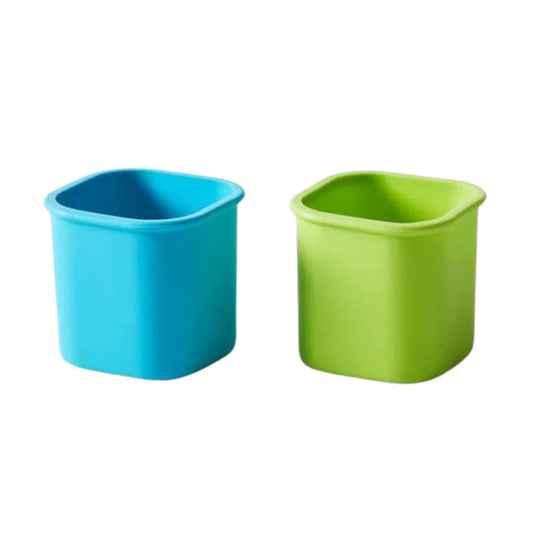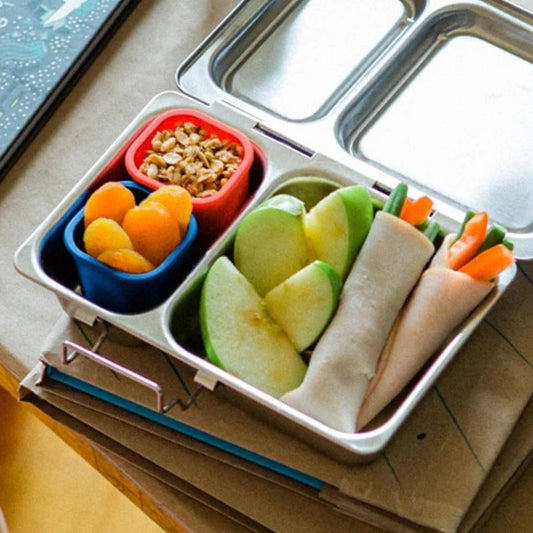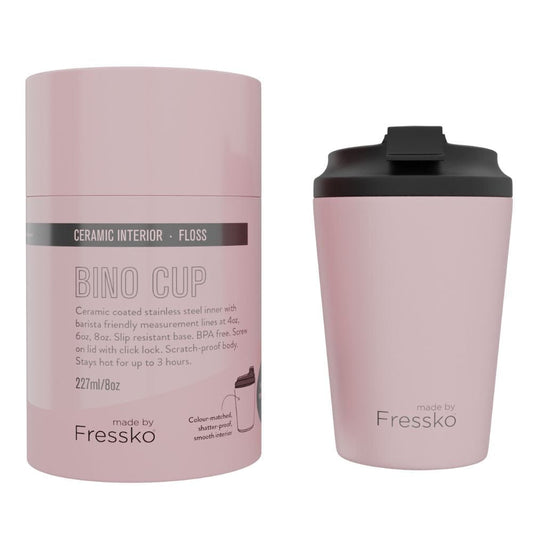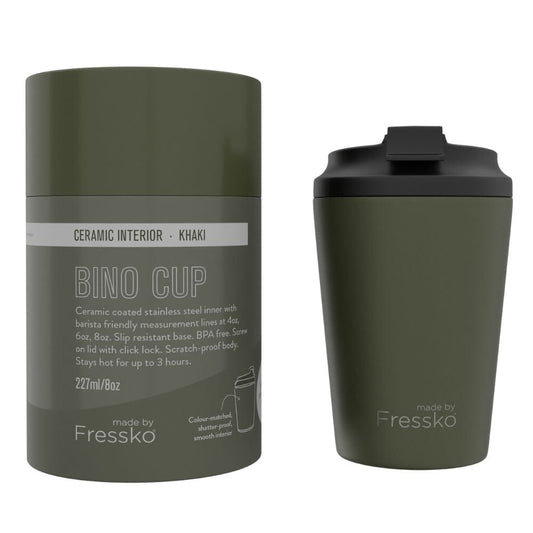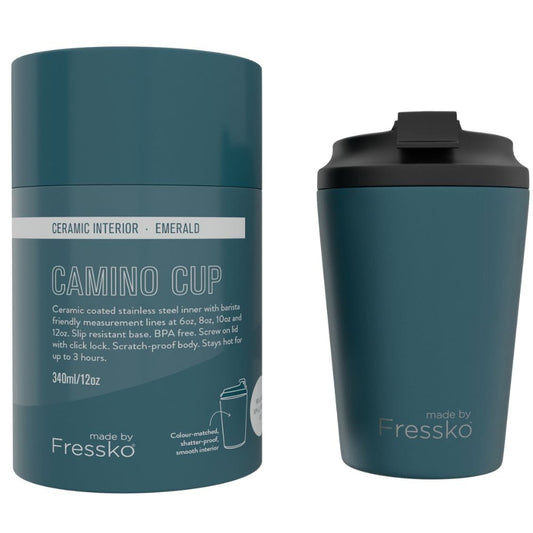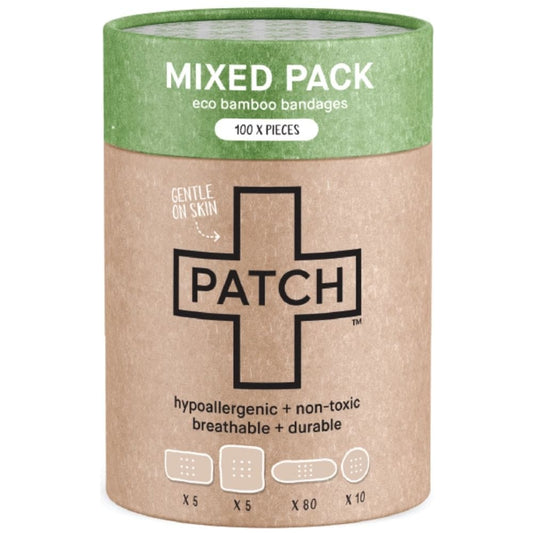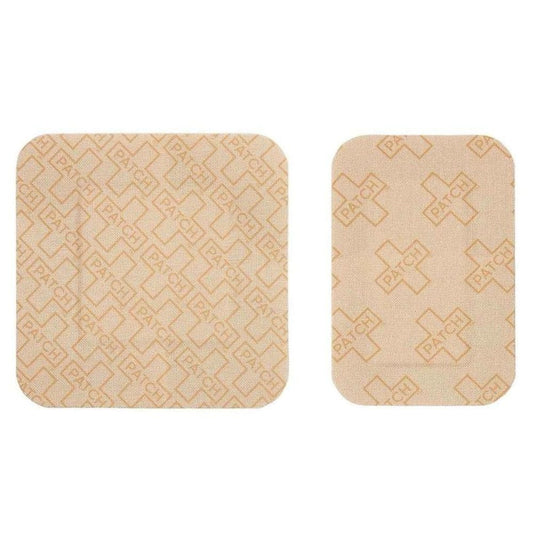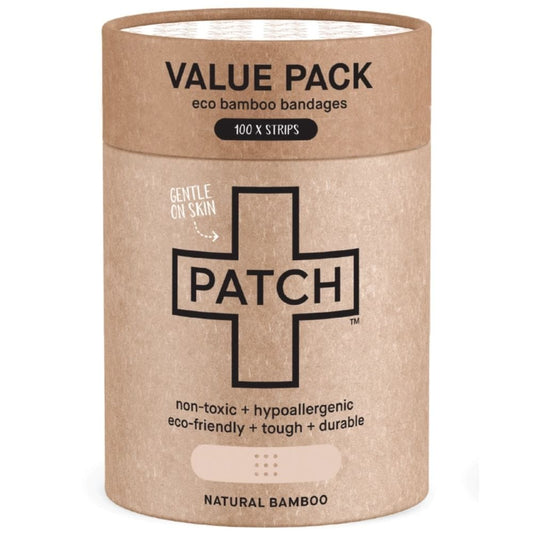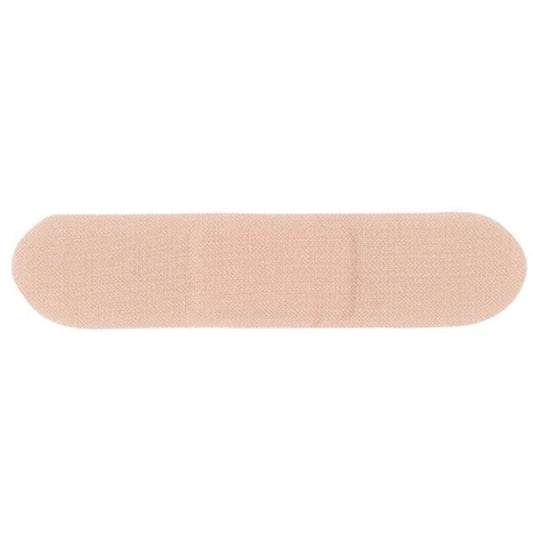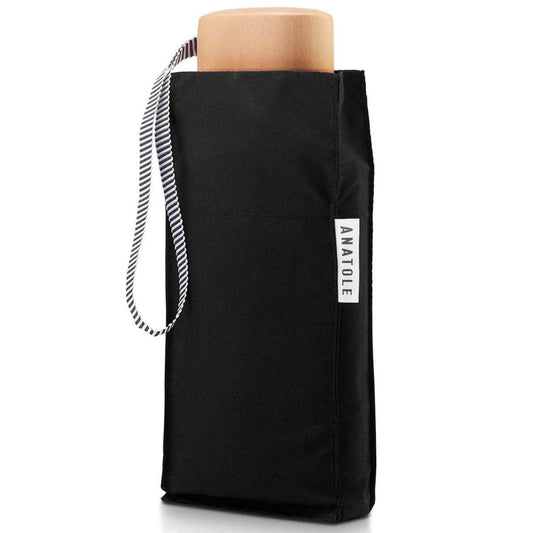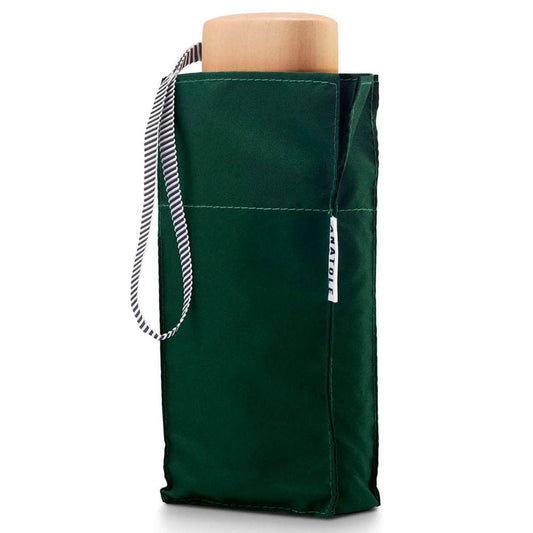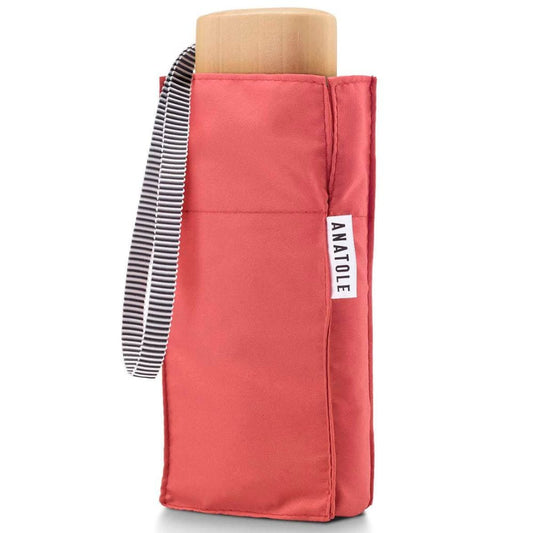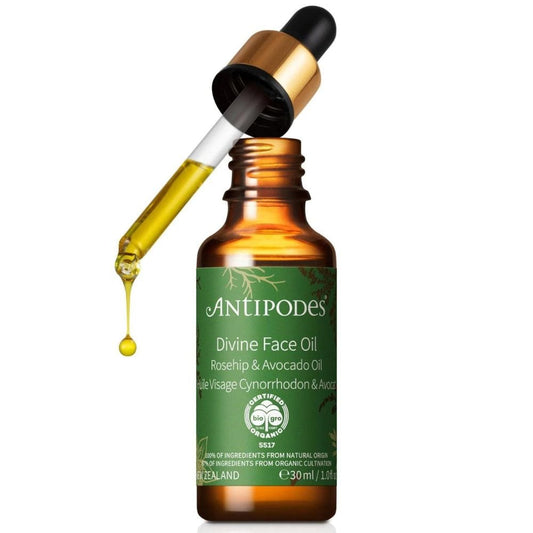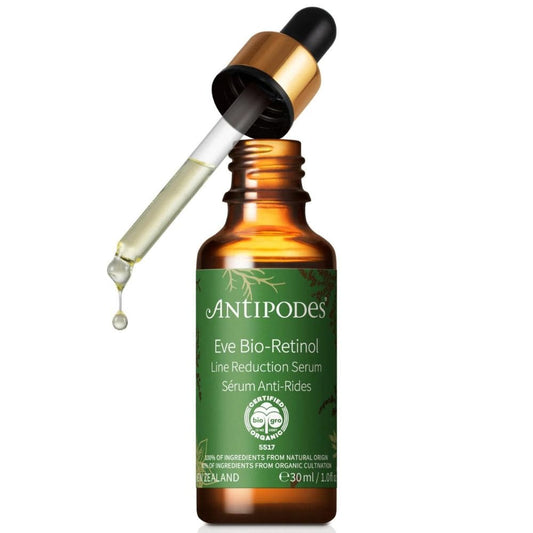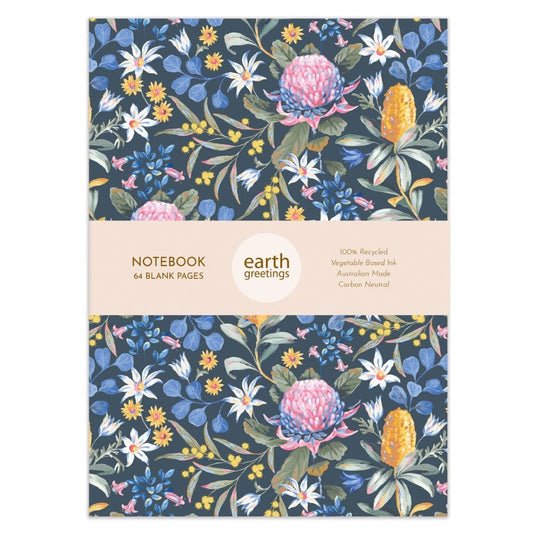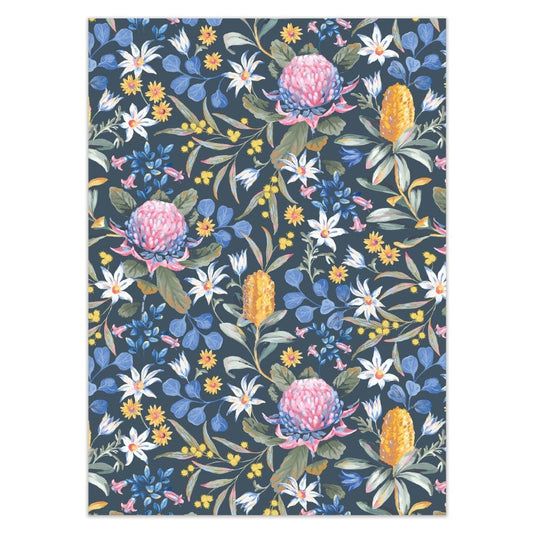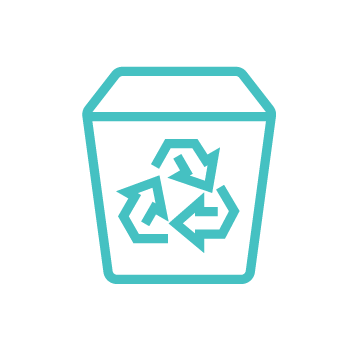
When we consider the big-picture impact humanity has on the environment, our individual actions can feel a little insignificant. The whole concept of living more sustainably might seem overwhelming, but even the smallest changes make a difference. And we're not just saying that. But we know the whole thing can sound a little vague:
live more sustainably! Implement more sustainable practices! Right — but how exactly? If you've ever wished you had a guidebook on how to make your home sustainable, you're not alone. That's why we've put together this guide to living more sustainably. Below, we break down exactly what a sustainable home is, and share how you can make your abode more planet-friendly.
What is a Sustainable Home?
A home is considered sustainable if it uses water, energy, and resources sustainably and efficiently, in a way that doesn't harm the environment or the inhabitants of the home. Think high-quality, low-impact systems and materials designed to stand the test of time. Ideally, materials and products within the home will also be reusable or recyclable to minimise waste going to landfills. When assessing the sustainability of a home, the below elements are usually considered:
- The energy and materials used during construction or renovation
- The ongoing impact the home has on the environment
- The design of the home and how much heating, cooling, water, and lighting it requires
- The recyclability of the materials used
- The durability of the home
- The recyclability of products within the home
How to Make a Home Sustainable
So, where to begin on making your home more sustainable? It really depends on whether you're going all out to build a sustainable home from the ground up, or looking to make your current living situation as environmentally friendly as possible. Either way, there are a number of ways you can work towards minimising your impact on the earth. We'll be the first ones to say it — we know sustainability can be challenging. Eco-friendly alternatives are often more expensive and take a little extra work to implement. So, no matter where you are on your sustainability journey, even the smallest changes are big wins worth celebrating.
Building or Renovating a Sustainable Home
We're starting big-picture for those looking to create a sustainable home from the ground up. If you're in the process of building or renovating, everything from the layout of the house to the paint on the walls can play a part in how sustainable your home is. Let's take a look at how you can make eco-friendly choices along the way.
Materials Matter
Consider the materials that are being used to construct or renovate the house. Materials that are durable, reusable, or recyclable are considered sustainable options. You may want to use recycled materials. For example, you can use pre-used beams for sub-floor structures, or outdoor bricks for bathroom floors. You can also opt for local materials and sustainably sourced wood for the exterior of the home. As for paints and varnishes, use
low volatile organic compounds where you can. It's also a good idea to pay attention to a material's ability to absorb and reflect heat. This will save you costs on heating and cooling down the line. Concrete and bricks are your best bet. If you're renovating your home or you've just wrapped up construction, you can extend the lifecycle of your materials by selling them. If you're in the process of building, use recycled materials instead of brand new ones.
Passive Design Strategies
Many builders are now using passive solar design strategies that help to naturally cool and heat the home, minimising the need for energy resources. The passive solar design also uses materials that reflect or absorb sunlight to help regulate the temperature within the home. Indoors, rooms are designed to prompt the movement of sun-heated air without fans. The seven main passive design techniques are
- Orientation
- Spatial zoning
- Thermal mass
- Ventilation
- Insulation
- Shading
- Glazing
These techniques can help to cut energy consumption, so you'll be saving money too.
Research Appliances
Appliances absorb a lot of energy, so opt for the most energy-efficient options where you can. Your washing machine, dryer, fridge, oven, and dishwasher are the main culprits. When comparing options, investigate how much they will cost to run. While less energy-efficient varieties may be cheaper up-front, they'll likely drain your pockets down the line.
What About Windows?
Windows are essential when it comes to saving energy resources. Certain window treatments will help to maximise coolness in warmer months and maximise heat as the weather cools. Double glazing, nonconductive frames, air-tight construction, and special coatings can be used to achieve this.
Go Renewable
Have a chat with your energy provider about switching to renewable energy options. You can also consider an energy audit, which will give you a better idea of where you could be making more sustainable choices.
Consider a Cool Roof
A cool roof will reflect the heat of the sun, keeping your house cooler when it's hot. With a cool roof, you'll save money and resources on air-conditioning.
Choose Paints Wisely
While the paint you use may seem relatively harmless, many paints are actually toxic to manufacture and end up releasing toxins into the home. Opt for eco-friendly paint varieties instead.

How to Be Sustainable at Home
The above steps won't be possible for everyone, even if you are currently building or renovating. However, there are still a variety of things you can do to make your home function in a more environmentally-friendly way.
Cover Gaps
Gaps in floorboards and under doors can lead to cool or warm breezes flowing in and out of the home, which you might be tempted to combat by simply upping the cooling or heating. For a more energy-efficient solution, create seals under doors and in between floorboards to keep the heat or coolness locked in.
Keep Things Clean
Clean your refrigerator coils and dryer filter regularly. This will ensure your appliances are functioning properly and efficiently. You might also want to consider adding a filter to your washing machine to ensure you're not pumping microplastic into waterways when you wash your clothes.
Cover Your Windows
This step is particularly important if your windows haven't undergone any of the treatments mentioned above. Opt for good-quality curtains to protect your home from the elements and minimise the need for artificial heating and cooling.
Go Solar
Solar panels generate electricity that can power your home. They are a much cleaner energy alternative as they emit far fewer greenhouse gasses than fossil fuels do.
Make the Switch to LED
LED lights are much more efficient and less toxic than fluorescent lights, so replace your old bulbs with LED ones instead.
Re-Insulate
Do you suspect that poor insulation is to blame for your energy use? Consider re-insulating the walls, ceilings, and floors.
Eco-Friendly Changes For Everyday

As we mentioned, seemingly tiny changes to your day-to-day living can make an impact on the health of our planet. So, if the above options aren't feasible for you at the moment, you may like to implement one or more of the below sustainable changes to your home.
-
-
Compost food scraps — Instead of throwing your food scraps into general waste (which will be sent to landfills), compost food waste and use it in your garden.
-
Collect rainwater — To minimise water usage, collect rainwater and use that to water your plants when they need a good drink. You could also install a drip irrigation system, which uses gravity to focus water onto the roots of the plants. This reduces water waste by preventing evaporation.
-
Buy recycled products — Consider purchasing pre-loved clothes and homewares instead of stocking up on all-new items. Keep the cycle going by donating or selling your own items that you no longer need.
-
Minimise dryer use — Aim to dry clothes outdoors on the line where you can. Dryers are big energy consumers, so it's best to reduce the use of your dryer if you can.
-
Pay attention to materials — One of the best ways to be more sustainable is to pay close attention to the materials you're using in the home. Avoid single-use and plastic items where you can. Here are some ideas:
Unsustainable Products To Avoid
So, what do unsustainable products actually look like? Below, we've listed 10 unsustainable products to avoid where you can.
-
-
Plastic straws – A whopping 2.47 billion straws head to Australian landfills each year. They often end up in our waterways and are very harmful to marine wildlife. Opt for reusable bamboo or stainless steel straws instead, or if you are looking for a disposable option, compostable paper straws are the way to go.
-
Plastic cotton buds – Approximately 1.5 billion cotton buds are made every day. Even more surprising? The average person disposes of 415 plastic cotton buds a year! Much like plastic straws, these cotton buds usually end up in oceans. The cotton tips eventually disintegrate, leaving just the plastic stick which is often ingested by wildlife. Opt for bamboo cotton buds instead, as these will biodegrade safely.
-
Coffee cups and lids – We all love a takeaway coffee; in fact, we use approximately 1.8 billion cups every year. Unfortunately, most coffee cups find their way to landfills, and cannot be recycled or composted. A sustainable alternative? A reusable glass keep cup is definitely our top pick.
-
Plastic bags – Even though we know they're a danger to the environment, between 500 billion and one trillion plastic bags are used each year. Most of these end up in landfills, and take around 1,000 years to decompose. Plastic bags are made from petrochemicals, which create greenhouse gas emissions. Opt for reusable organic cotton or canvas bags instead.
-
Single-use razors – Disposable razors are usually made from plastic and cheap steel, both of which cannot be reused or recycled. Where you can, go for a electric shaver or refillable razor instead.
-
Food packaging – Try to avoid single-serve, small items with a lot of packaging. Instead, buy in bulk, avoid plastic-wrapped fruits and vegetables, and use airtight containers to store spices, sugar, flour, and other loose products. If you can, head to the store with your container!
-
Tea bags – Unfortunately, the sealing plastic within tea bags is not recyclable or biodegradable, so tea bags contribute to plastic pollution and waste. Where you can, go for loose-leaf tea instead.
-
Makeup wipes – Makeup wipes may seem harmless, but they're actually one of the major contributors to plastic pollution. They spend years clogging up landfills and decompose very slowly. Instead of makeup wipes, opt for natural makeup remover and organic cotton makeup rounds.
-
Sunscreen – While being sunsmart is important for our health, many of the sunscreens on the market are damaging to the health of our marine wildlife and coral reefs. The chemicals in most sunscreens bleach coral reefs and leave them vulnerable to disease and decay. Keep yourself and our oceans safe by opting for a natural sunscreen.
-
Toothpaste – Toothpaste contains microbeads, which are small bits of plastic that are too tiny to be filtered out. Because of this, these microbeads end up in our waterways and are eaten by marine wildlife. Opt for a natural or DIY toothpaste instead.
A Final Word
Sustainable living can be really challenging. Sustainable options are often more expensive, and it can be difficult to implement eco-friendly practices into the home. We recommend starting small — perhaps by swapping out your makeup wipes for a natural makeup remover, or buying loose leaf tea instead of tea bags. Remember to be kind to yourself in the process and to congratulate yourself on the small wins. Even these seemingly simple changes are making a real impact.
 When we consider the big-picture impact humanity has on the environment, our individual actions can feel a little insignificant. The whole concept of living more sustainably might seem overwhelming, but even the smallest changes make a difference. And we're not just saying that. But we know the whole thing can sound a little vague: live more sustainably! Implement more sustainable practices! Right — but how exactly? If you've ever wished you had a guidebook on how to make your home sustainable, you're not alone. That's why we've put together this guide to living more sustainably. Below, we break down exactly what a sustainable home is, and share how you can make your abode more planet-friendly.
When we consider the big-picture impact humanity has on the environment, our individual actions can feel a little insignificant. The whole concept of living more sustainably might seem overwhelming, but even the smallest changes make a difference. And we're not just saying that. But we know the whole thing can sound a little vague: live more sustainably! Implement more sustainable practices! Right — but how exactly? If you've ever wished you had a guidebook on how to make your home sustainable, you're not alone. That's why we've put together this guide to living more sustainably. Below, we break down exactly what a sustainable home is, and share how you can make your abode more planet-friendly.

 As we mentioned, seemingly tiny changes to your day-to-day living can make an impact on the health of our planet. So, if the above options aren't feasible for you at the moment, you may like to implement one or more of the below sustainable changes to your home.
As we mentioned, seemingly tiny changes to your day-to-day living can make an impact on the health of our planet. So, if the above options aren't feasible for you at the moment, you may like to implement one or more of the below sustainable changes to your home.


